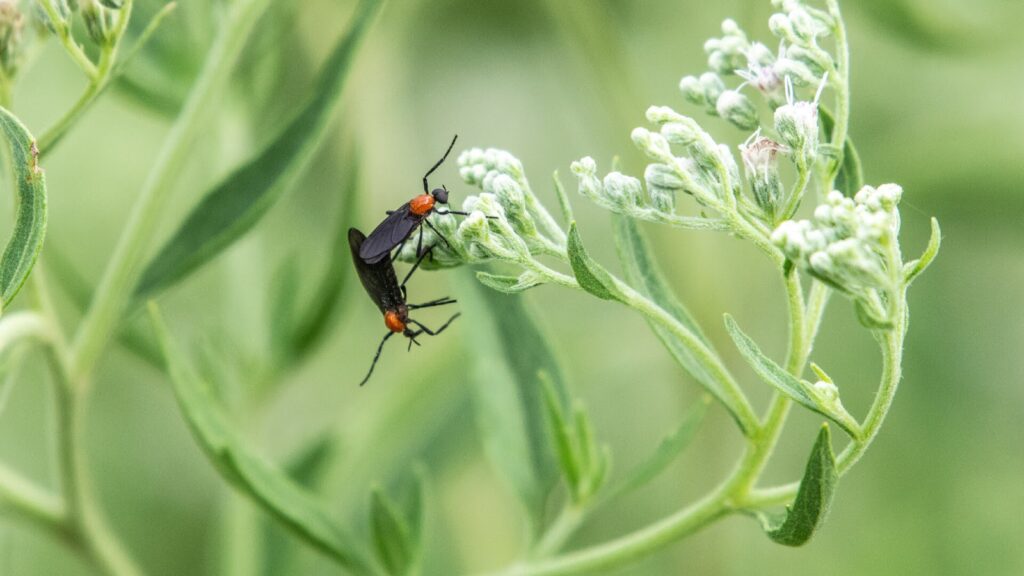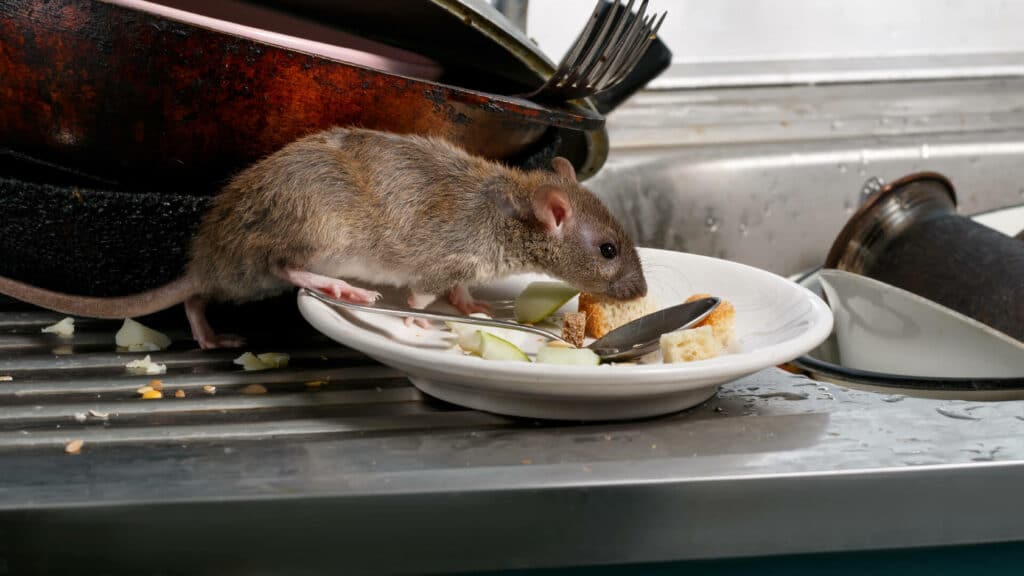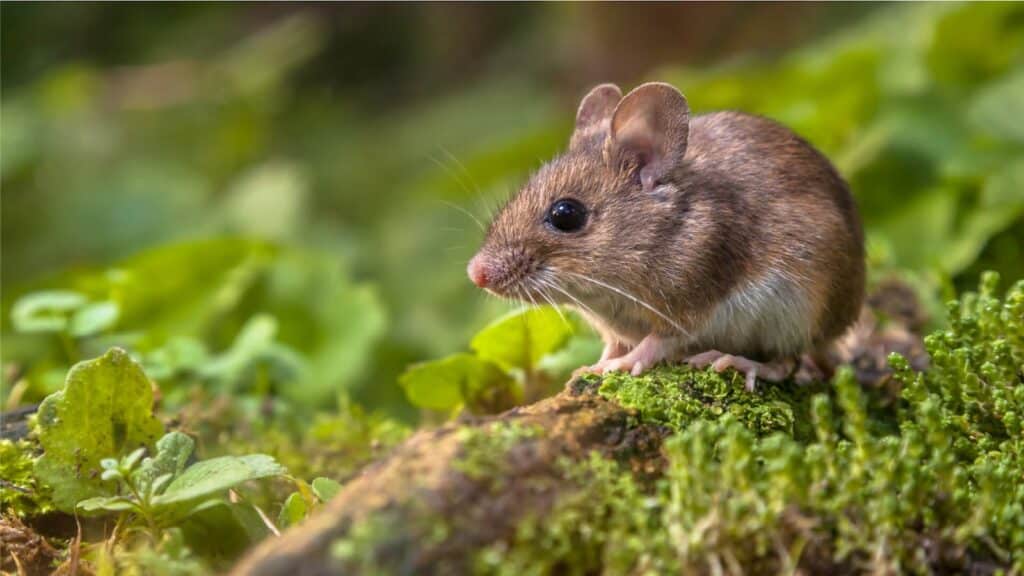Did you know that there is an insect with a rather peculiar name that often sparks curiosity and even fear? Meet the earwig, a nocturnal creature belonging to the order Dermaptera. With elongated bodies and distinctive pincers called cerci at their rear end, these insects have an appearance that can be quite intimidating.
Earwigs are known for their unique forewings, which fold under shorter leathery hindwings. While they might not be the most cuddly creatures, they play an important role in our ecosystem as scavengers and predators of other insects. Their ability to adapt to various environments has allowed them to thrive in different parts of the world.
We’ll explore their behavior, habitat preferences, and dispel some common misconceptions surrounding these intriguing insects. So let’s dive right in and discover more about these mysterious creatures that share our planet!
Behavior and Habits of Earwigs: Insights into Their Daily Lives
Nocturnal Creatures
Earwigs are primarily active during the night. While you’re cozy in your bed, they come alive, scuttling around in search of food and mates. But where do they hide during the day? These sneaky insects seek shelter in dark, damp places. You might find them lurking under rocks or logs, hiding in crevices or cracks, or even burrowing into the soil. Don’t be surprised if you spot them making themselves at home inside your garden shed or basement.
Omnivorous Appetite
Earwigs are not picky eaters. They have a diverse palate and will devour just about anything that comes their way. These opportunistic feeders have a penchant for plant material such as leaves, flowers, and fruits. They also have a taste for insects like aphids and mites that can wreak havoc on your plants. But it doesn’t stop there; earwigs happily munch on decaying organic matter as well. So if you find them nibbling away on fallen leaves or rotting wood in your garden, don’t be alarmed – they’re just doing what comes naturally to them.
The Mighty Cerci
One distinctive feature of earwigs is their formidable-looking cerci – those pincers-like appendages protruding from their abdomens. These cerci serve multiple purposes in an earwig’s life. Firstly, they act as a defense mechanism against predators who dare to challenge these little critters’ territory. If threatened, an earwig will raise its cerci threateningly to ward off enemies – a clear signal that says “Back off!” Secondly, the cerci play a crucial role in mating rituals among earwigs. Male earwigs use their cerci to grasp onto females during courtship, ensuring a successful union. Lastly, these appendages help earwigs communicate with each other. They use their cerci to emit pheromones, chemical signals that convey messages about territory, mating availability, and even danger.
Exploring the Lifespan and Habitat of Earwigs
Lifespan of Earwigs: One to Three Years
Earwigs, those fascinating creepy crawlies you often find scurrying around your garden or hiding under rocks, have a lifespan that typically ranges from one to three years. These peculiar insects go through various stages of development during their lifetime, starting as eggs and eventually transforming into adults.
Preferred Habitats: Moist Environments and Hiding Places
Earwigs have a strong preference for moist environments. You can often spot them in gardens, flower beds, and even under rocks or logs. These areas provide them with the ideal conditions they need to thrive. The moisture helps keep their bodies hydrated while offering an abundance of food sources.
Interestingly enough, some species of earwigs have adapted to urban environments as well. You might come across these little critters making themselves at home in basements or bathrooms. They seek out dark and damp spaces where they can find shelter and sustenance.
Earwig Species: A Diverse Range
The world of earwigs is vast and diverse, with numerous species belonging to the order Dermaptera. Among these species are the female earwigs (also known as queens) and male earwigs (often referred to as kings). Each gender plays a vital role in the reproduction process.
One well-known species is the European earwig (Forficula auricularia), which has made its way across many continents due to human activities. This particular species has adapted well to different environments and has become quite successful in establishing populations around the world.
Diet: Predators and Prey
As predators, they feed on small insects like aphids, mites, and other pests.
However, earwigs are not solely predators. They also feed on decaying organic matter, animal remains, foliage, and even soil. Their diet is versatile and allows them to adapt to different food sources depending on availability.
Nymphs: Early Stages of Earwig Life
During the early stages of their life cycle, earwigs exist as nymphs. These young insects resemble smaller versions of adult earwigs but lack wings. As they grow and molt several times, they gradually develop into fully formed adults.
The nymphs require a suitable environment with ample hiding places to protect themselves from predators and harsh weather conditions. They often seek refuge in crevices, cracks, or beneath objects like stones or logs.
Fascinating Dermaptera: An Order of Insects
Earwigs belong to the order Dermaptera, which includes other intriguing insect species as well. This order consists of approximately 2,000 known species spread across different genera. Each genus has its own unique characteristics and behaviors that make it distinct from others within the order.
Identifying and Distinguishing Earwigs from Similar Insects
The Forceps-Like Cerci: A Distinctive Feature of Earwigs
One surefire way to identify an earwig is by its forceps-like cerci located at the end of its abdomen. These curved pincers are unique to earwigs and serve various purposes. While some may find them intimidating, they are actually harmless to humans. The cerci help earwigs in a multitude of ways, such as defense mechanisms, capturing prey, or even assisting in mating rituals. So if you spot these distinct pinchers on an insect, chances are it’s an earwig.
Wings Folded Beneath Tegmina: Setting Earwigs Apart
One key feature lies in their wings. Unlike other insects with fully developed wings on display, adult earwigs have wings that are neatly folded beneath short forewings called tegmina. These tegmina act as protective covers for the delicate wings underneath. So if you notice an insect with small forewings covering the back and no visible full-sized wings, it’s likely an earwig.
Adult Size: From Tiny Pincher Bugs to Curved Pincer Giants
Earwig size can vary quite significantly among individuals within the same species. On average, adult earwigs measure between 0.5 to 1 inch (12 to 25 mm) in length. However, it’s important to note that there can be exceptions on both ends of this range. Some species may reach lengths closer to half an inch while others might grow up to an inch or slightly more. This variation makes it crucial not to rely solely on size when identifying earwigs but rather consider their other distinctive characteristics.
The Truth About Earwigs in Ears: Separating Fact from Fiction
Rare Occurrence, Not a Common Phenomenon
Contrary to popular belief, the idea of an earwig crawling into your ears while you sleep is extremely rare. It’s not something that happens on a regular basis, despite what urban legends may have you believe. Earwigs are not intentionally targeting our ears as habitats; it’s simply a misconception that has been perpetuated over time.
Accidental Encounters and Seeking Shelter
While it’s true that earwigs might accidentally wander onto a sleeping individual‘s body seeking shelter or warmth, they do not specifically aim for ears. These small insects are more interested in finding dark and damp places to hide during daylight hours. So if you wake up with an earwig nearby, chances are it was just looking for a cozy spot and stumbled upon your ear by accident.
Seeking Medical Assistance for Safe Removal
In the rare event that an earwig does manage to find its way into your ear canal, it is advisable to seek medical assistance for its safe removal. Attempting to remove the insect yourself can be risky and potentially cause harm or damage to your ear. Medical professionals have the necessary tools and expertise to ensure the proper extraction of the intruder without any complications.
It’s important to remember that panicking will only make matters worse. Stay calm and seek professional help promptly. In most cases, medical professionals will use special instruments like forceps or suction devices designed specifically for removing foreign objects from the ear canal.
Damage Caused by Earwigs: Understanding the Impact on Plants and Structures
Feeding Damage to Plants
Earwigs may seem harmless at first glance, but they can wreak havoc on your precious plants. These little critters have a voracious appetite and aren’t picky about what they munch on. From leaves to flowers, fruits to seedlings, earwigs will chow down on any plant matter that catches their fancy.
Earwigs can leave behind quite a mess. They often create irregularly shaped holes in leaves, giving them a tattered appearance. This not only affects the aesthetics of your plants but also compromises their ability to carry out vital photosynthesis.
In addition to leaf damage, earwigs are notorious for chewing holes in plant stems. This weakens the structural integrity of the plant and makes it more susceptible to breakage or disease. Imagine waking up one morning to find your beautiful rose bush with gaping wounds caused by these sneaky insects!
Furthermore, earwigs have a particular affinity for soft fruits like strawberries. They tunnel into these juicy delights, leaving behind unsightly scars and rendering them unappetizing for both humans and wildlife alike. It’s heart-wrenching to watch your hard work in the garden go to waste because of these pesky pests.
Nuisance in Structures
As if wreaking havoc on plants wasn’t enough, earwigs sometimes decide that invading human spaces is their next adventure. While they don’t pose any direct harm to humans or pets, their presence can be quite bothersome.
Earwigs are known for finding their way into homes through cracks or open doors. Once inside, they scuttle around seeking shelter and food sources. Finding an army of these creepy crawlies in your kitchen or bathroom can be quite unsettling.
Although they don’t cause significant structural damage like termites or carpenter ants, earwigs can still be a nuisance. They might stain surfaces with their excrement or leave behind an unpleasant odor. Nobody wants to deal with that!
Dealing with Earwig Damage
Now that we understand the impact of earwigs on plants and structures, it’s essential to know how to tackle this issue effectively. Here are some strategies you can employ:
- Remove hiding spots: Earwigs love dark and damp places, so eliminate their hiding spots by decluttering your garden or sealing cracks in your home’s foundation.
- Use barriers: Create physical barriers around vulnerable plants using diatomaceous earth or copper tape. These substances act as deterrents for earwigs.
- Trap them: Set up traps made from rolled-up newspaper or empty tuna cans filled with vegetable oil. The earwigs will be attracted to the shelter and get trapped in the oily surface.
- Natural predators: Encourage natural predators like birds, frogs, or toads into your garden to help control the earwig population.
Remember, prevention is better than cure.
Importance of Earwig Management in Horticulture and Pest Control
Effective earwig management is crucial in horticulture to prevent significant crop damage.
Earwigs may seem like harmless insects, but they can wreak havoc on horticultural crops if left unchecked. These nocturnal creatures are known for their voracious appetites and can devour a wide range of plants, including fruits, vegetables, flowers, and ornamental plants. Their feeding habits can lead to significant crop losses and aesthetic damage, making it imperative for growers to implement effective earwig management strategies.
To mitigate the impact of earwigs on horticultural crops, integrated pest management (IPM) techniques have proven to be highly effective. IPM involves combining various approaches to control pests while minimizing harm to the environment and non-target organisms.IPM offers a comprehensive solution that includes cultural practices, biological controls, and targeted insecticides.
Cultural practices play an essential role in preventing earwig infestations. By implementing certain techniques, growers can create an unfavorable environment for these pests. Some key cultural practices include:
- Removing debris: Earwigs thrive in dark and moist environments. Clearing away garden debris such as fallen leaves or decaying plant matter reduces their hiding places.
- Proper irrigation: Overly damp soil attracts earwigs. Watering plants at the base instead of overhead helps keep the foliage dry.
- Mulching with caution: While mulch conserves moisture and suppresses weeds, excessive mulching can provide ideal habitats for earwigs. Using a thin layer of mulch or opting for materials less attractive to them can help discourage infestations.
Biological controls offer sustainable solutions by harnessing natural enemies of earwigs. These beneficial organisms prey on or parasitize the pests without causing harm to the crops or surrounding ecosystems. Some examples of biological controls for earwigs include:
- Predatory insects: Ground beetles, centipedes, and spiders are natural predators of earwigs. Encouraging their presence in the garden can help keep earwig populations in check.
- Parasitic nematodes: These microscopic organisms infect and kill earwig larvae, effectively reducing their numbers. Applying nematodes to the soil can provide long-term control.
In cases where cultural practices and biological controls alone may not be sufficient to manage severe infestations, targeted insecticides can be employed as a last resort. However, it is crucial to choose insecticides that specifically target earwigs while minimizing harm to beneficial insects and pollinators. Some options for targeted insecticides include:
- Carbaryl: This broad-spectrum insecticide provides effective control against earwigs but should be used judiciously due to its potential impact on non-target organisms.
- Spinosad: Derived from naturally occurring bacteria, spinosad is considered more environmentally friendly than some other chemical options.
- Diatomaceous earth
Maintaining a Clean Home and Garden: Tips to Keep Earwigs at Bay
Reduce moisture levels around your home and garden
Earwigs are household pests that thrive in damp areas, so it’s essential to reduce moisture levels both inside and outside your house. Start by fixing any leaks or plumbing issues that may be causing excess moisture. Make sure gutters and downspouts are functioning properly to prevent water from pooling near the foundation. Avoid overwatering your garden plants as this can create an ideal environment for earwigs.
Clear away debris, leaf litter, or decaying organic matter
Earwigs seek shelter in dark and moist places, such as piles of debris, leaf litter, or decaying organic matter. To keep them at bay, regularly clear away these potential hiding spots from your garden. Rake up fallen leaves and dispose of them properly. Remove any dead plants or vegetation that may attract earwigs. By maintaining a clean and tidy garden, you’ll make it less appealing for these pests to take up residence.
Seal any gaps or cracks in walls, windows, doors, or foundation
Earwigs are small creatures that can easily find their way into your house through tiny gaps or cracks in walls, windows, doors, or the foundation. Take the time to inspect these areas and seal any openings you find using caulk or weatherstripping. Pay close attention to areas where pipes enter the house as they can provide entry points for earwigs. By blocking their access routes into buildings, you can significantly reduce their presence indoors.
By following these simple tips for maintaining a clean home and garden, you can effectively keep earwigs at bay without resorting to harmful chemicals or pesticides. Remember that prevention is key when dealing with household pests like earwigs.
To summarize:
- Fix leaks and plumbing issues to reduce moisture levels.
- Ensure proper drainage around your house.
- Avoid overwatering garden plants.
- Clear away debris, leaf litter, and decaying organic matter regularly.
- Dispose of fallen leaves and dead vegetation properly.
- Inspect and seal any gaps or cracks in walls, windows, doors, and the foundation.
By implementing these measures, you’ll create an environment that is less attractive to earwigs. Remember to stay vigilant and address any issues promptly to maintain a clean home and garden free from these pesky pests.
Tips for Controlling and Getting Rid of Earwigs
Set up Traps
To tackle those pesky earwigs, one effective method is to set up traps using rolled-up newspapers or cardboard tubes filled with straw or paper as bait. These nocturnal insects are attracted to dark, damp places, making the cozy interior of a newspaper roll an irresistible hiding spot. Simply place the traps in areas where earwigs are active, such as near plants or in corners of your garden. Check the traps each morning and dispose of any captured earwigs. This method provides a simple yet efficient way to reduce their numbers.
Utilize Diatomaceous Earth
Another natural deterrent for earwigs is diatomaceous earth. This powdery substance, made from fossilized remains of diatoms, acts as a physical barrier that dehydrates and kills these unwanted guests. Sprinkle diatomaceous earth around plants or areas where you’ve noticed earwig activity. It’s important to note that this method works best when applied in dry conditions since moisture can render it less effective. By utilizing this natural solution, you can create an inhospitable environment for these critters without resorting to harmful chemicals.
Effective Pest Control Measures for Earwigs
Professional pest control services can be highly effective in treating earwig infestations. These experts have the knowledge and experience to identify the extent of the problem and develop a targeted treatment plan. They use a combination of methods, including insecticides, traps, and exclusion techniques, to eliminate earwigs and prevent future infestations. Professional pest control technicians are trained to effectively handle and apply pesticides, ensuring the safety of your home and family. Additionally, they can provide valuable advice on how to prevent earwigs from returning and offer ongoing monitoring and maintenance to ensure long-term control. Hiring a professional pest control service can save you time, effort, and frustration, while providing you with peace of mind knowing that your earwig problem is being effectively addressed.
Summing Up the World of Earwigs
In conclusion, earwigs are distinct pests with unique behavior and habits. They have a lifespan and habitat that are worth exploring, and it’s important to be able to identify and distinguish them from similar insects. We’ve debunked the myth about earwigs crawling into ears, so you can rest easy knowing that’s not something you need to worry about.
Earwigs may cause damage to plants and structures, making their management crucial in horticulture and pest control. By following simple tips, such as maintaining a clean home and garden, you can keep earwigs at bay. We’ve provided useful advice on how to control and get rid of these pesky insects when necessary.
To summarize:
- Earwigs have interesting behavior and habits.
- They can be identified by their distinct characteristics.
- They do not crawl into ears.
- Earwig management is essential for protecting plants and structures.
- Maintaining cleanliness in your surroundings helps prevent infestations.
- Various methods can be used to control and eliminate earwigs.
Remember, if you encounter an earwig problem or require further assistance, consult with a professional pest control service for tailored advice specific to your situation. Taking action promptly will help ensure a comfortable living environment free from unwanted pests.










